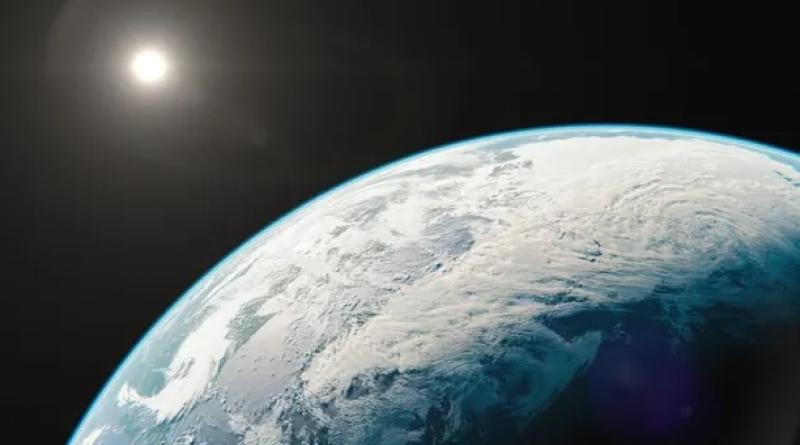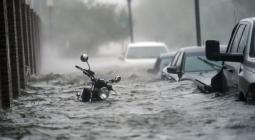As climate scientist Kai Kornhuber walks around New York City this winter, an eerie feeling creeps into his body. It’s warm enough for a T-shirt in December, and the birds are chirping loudly.
The temperatures tell birds and trees that it’s time for action, but the systems are out of sync for December, says Kornhuber, a postdoctoral researcher at Columbia University’s Earth Institute.
“It’s not right, there’s a disconnect between how it should be and how it is.” Kornhuber said.
Warmer winters are happening across the globe, and leading to some big impacts: 2021 brought the planet’s 16th-warmest February since records began.
While the popular imagination might associate the climate crisis with scorching summers and their attendant droughts, wildfires, hurricanes and heat waves, milder winters can also be drivers of catastrophic weather events and profound changes. They range from shifts in agricultural use, triggering changing weather patterns to boosting the likelihood of violent events, like the swarm of tornadoes that wreaked havoc in the American midwest and south over last weekend.
“One of the truisms in climate science is that cold places and cold times of year warm faster than the warmer places and warmer times of year,” says Daniel Swain, a climate scientist at UCLA studying how extreme events are changing on a warming Earth. “Not only is the actual rate of warming faster in colder seasons and places – like the Arctic, which is warming three times faster than other places – but also a lot of impacts that are associated with warming are amplified.”
Swain points to one specific threshold where temperature has a huge impact: whether precipitation falls as liquid rain or frozen snow depends on just a single degree difference. And in the west of America, where there was a gigantic snow drought until just a few days ago, that has huge impacts.
“There was wildfire risk up until last week, even at 8-9,000ft in elevation,” says Swain. “That has directly to do with the lack of snowpack.”
When precipitation falls as snow, it sticks around for longer, creating runoff moisture for the spring season – it’s often referred to as the bank of future water for moisture-strapped places. But when it falls as rain, it runs off immediately. “Winter warming affects the frozenness – or not – of things, which is ecologically important for the accumulation of snowpack and the water supply,” explains Swain.
Warm spells in winter can create extreme heat waves later in summer. Unseasonal warmth can lead to a premature snow melt and vegetation growth, which lowers soil moisture and amplifies the likelihood of extreme and persistent heat waves throughout the summer, says Kornhuber. He points to the chain of events that led up to a heatwave that rocked Siberia in 2020 and was associated with wildfires that lasted the whole summer and caused record breaking carbon emissions.
In that event, late-winter heat in February and March sucked moisture from the soils at a time when vegetation was also taking up moisture – and parched soils can lead to summer heat waves, says Kornhuber. “Low soil moisture is one of the most important ingredients of mega heatwaves.”
Climate model projections for the United States indicate that overall there will be an increase in the likelihood of conditions favorable to severe storms as the planet warms, says Chiara Lepore, an associate research scientist at Lamont Doherty Earth Observatory at Columbia University.
Lepore published research last month predicting 14-25% increase in severe storms per every extra 1C degree of future global temperature increase.
“The main driving mechanism is warming temperatures and increasing moisture, which are some of the major ingredients in storm updrafts.” She adds that that number represents the increasing frequency of conditions favorable to severe weather occurrence – not actual storms – and only some of these storms will produce tornadoes, she says. “The uncertainty is still large.”
Swain says the climate crisis evidence is weaker for tornadoes than for other huge storms, but that’s mainly because it hasn’t been studied as much. “The vertical instability – which is likely with more warming – would create an increase in tornado-producing environments,” he says. “So it’s pretty clear that climate change will begin to increase the likelihood of severe convective weather.”
Warmer winters can also impact agriculture, as some crops require a threshold of chill hours to achieve optimal outcomes. Cold temperatures that many orchard crops need could decrease by as much as 60% in California’s Central Valley by 2100. Researchers say apples, cherries and pears, which require the longest period of cold weather, could be hit the hardest.
Late-winter heat can also wreak havoc on crops, if they get the biological signal to flourish, only to be knocked down by frost soon after budding. “It goes to show that relatively small amounts of global warming can have big effects in certain places and certain times of year,” says Swain.
There is even evidence that climate change is at the heart of freak events like the cold snap that left Texas in a deep arctic freeze last February, causing hundreds of deaths and billions of dollars in damage. A weak polar vortex became divided and brought a big gush of cold air to the southern United States – and the vortex is more unstable than in the past.
Kornhuber says that winter warming is essentially another form of saying that the summer season extends more and more, while the spring and fall transitions squeeze out what we used to think of as wintertime. “As temperatures increase, moderate climate zones just will not have winter the way we know it anymore.”







